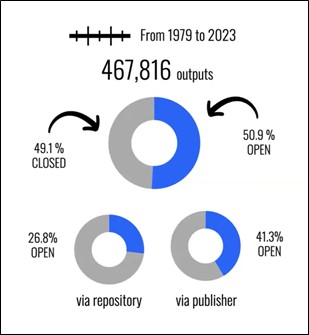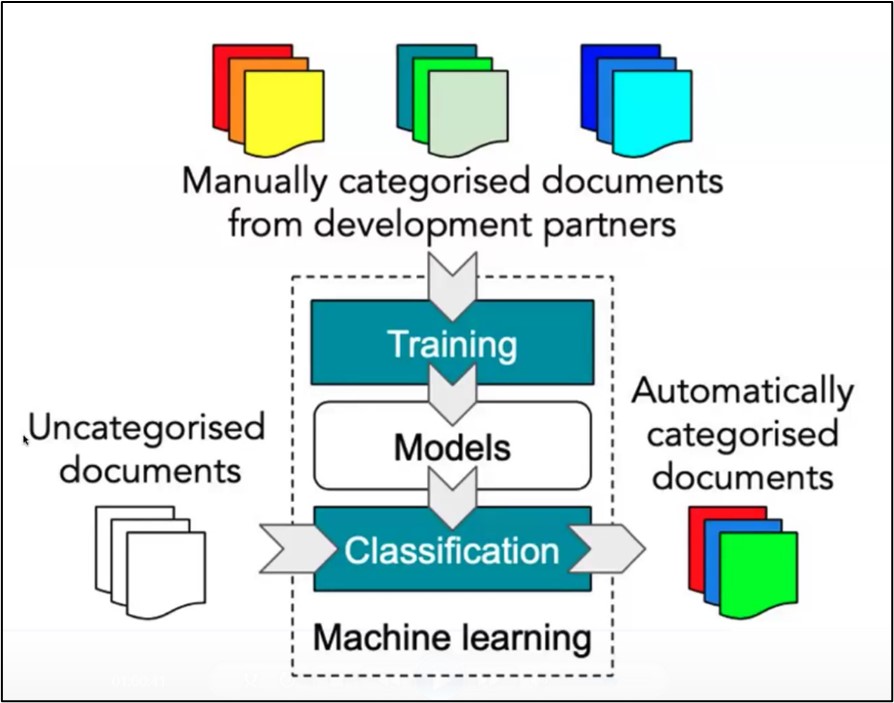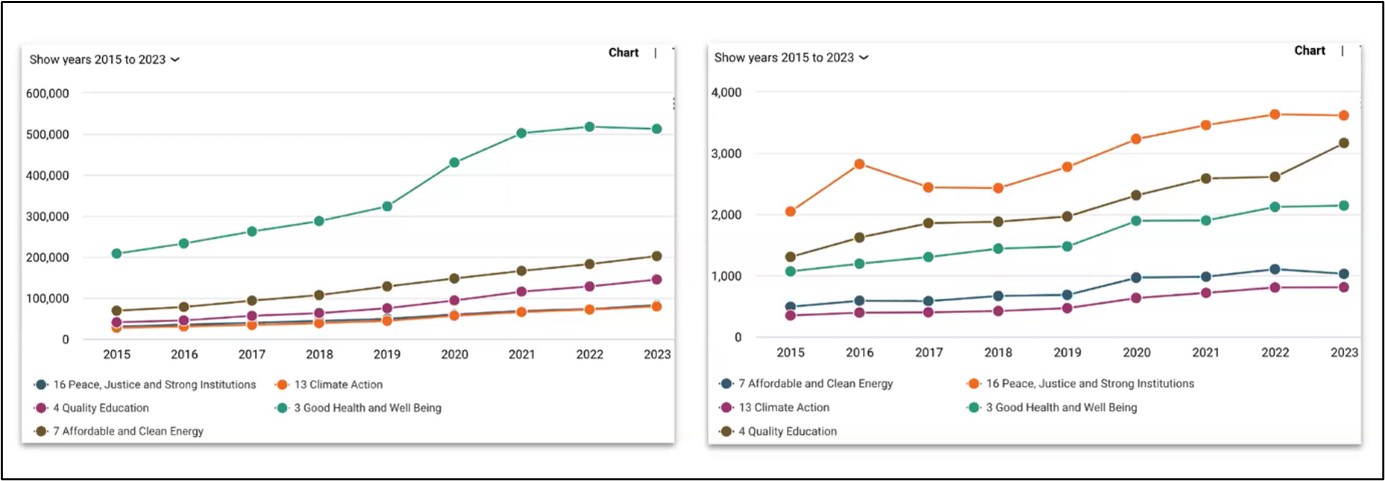In October 2024, CSE, with support from Digital Science, hosted a webinar exploring the use of soft power in scholarly publishing.
Coined by political scientist Joseph Nye in the 1980s, “soft power” refers to the ability to influence through culture, values, and ideas rather than coercion—a concept traditionally associated with diplomacy and international relations.1 Only more recently has it been applied to science diplomacy to inflate diplomatic ties beyond transactional relationships, in an increasingly multipolar global landscape.2
Organized and moderated by Eleonora Colangelo (Frontiers) and Steve Smith (AIP Publishing), the webinar extended this political category to publishers for the first time, positioning them as active contributors to global discourse rather than mere content gatekeepers. By aligning their work with the United Nations Sustainable Development Goals (SDGs), publishers can “lead with purpose” as architects of global discourse and wielders of influence.3
Publishers Mitigating Global Threats: Basics and Case Studies of Soft Power
Monica Granados, Director of Open Science at Creative Commons, opened the webinar through 2 case studies of soft power applied to academic publishing.
First, she highlighted the intersection between a publisher’s soft power and SDG 3, Good Health and Well-Being, through the lens of the COVID-19 pandemic. As the World Health Organization declared a global emergency, publishers responded with an unprecedented wave of collaboration. By 2021, over 77% of COVID-19–related research was freely accessible: a breakthrough that accelerated vaccine development and demonstrated the way in which publishers can enable swift, impactful responses to global crises.
Her second example, focused on SDG 13, Climate Action, told a more challenging story. Despite decades of urgency, only half of climate-related research outputs have been openly accessible since 1979. Creative Commons, with data from the Curtin Open Knowledge Initiative and Sesame Open Science, aims to address this through their Unbinding Project,3 which seeks to make approximately 18,000 papers from 200 publishers cited in the Intergovernmental Panel on Climate Change’s Sixth Assessment Report Open Access (Figure 1). These papers represent the most up-to-date and critical knowledge on climate change, selected by leading scientists to inform mitigation, adaptation, and solution strategies.

Granados’s insights ultimately served as a call to action for publishers—to ‘open up the papers’ and turn access into action for global equity, resilience, and sustainability. The Open Climate Data project highlights the incubator power of such a message.4
Quality Content as the Seed of Soft Power
Stephan Kuster, Head of Public Affairs at Frontiers, echoed Granados’s remarks, emphasizing that high-quality content is the foundation of publishers’ soft power. He stressed that by aligning with the SDGs and advocating for Open Access, publishers have an ethical duty to broaden their influence, ensuring research moves from niche topics to impact policymakers, industry leaders, and society. Kuster argued,
That is going to be more than a marketing slogan; it’s an actual promise to our authors, a promise to research funders, a promise to wider society. We need to find the power to back up that responsibility. The publication of an article should not be the end of the publisher’s role, but rather just one more step, followed by many others.
According to Kuster, through initiatives such as Frontiers Policy Labs, Frontiers exemplifies the “soft power in action” concept by fostering conversations that transform research findings into actionable decisions. Similarly, partnerships like the one with World Economic Forum, leading to the Top 10 Emerging Technologies report, highlight how publishers can serve as key intermediaries, showcasing science-driven innovations and shaping industry dialogue as trusted facilitators.5
Analysts describe soft power also as a cultural legacy, a long-term and cross-generational force. Programs like Frontiers for Young Minds embody this concept, where children actively engage in peer-reviewing Nobel laureates’ research alongside science mentors.6 Through such initiatives, soft power’s influence extends beyond the present, by inspiring critical thinking and a deeper understanding of science as a process, leaving a lasting mark on how young minds first engage with research.
The discussion shifted focus to Frontiers’ flagship journal, Frontiers in Science. Embodying the multistakeholder approach central to soft power, the journal serves as a dynamic platform where research is integrated with para-scientific content (i.e., youth-friendly versions, expert editorials, and policy perspectives). Over time, it has become a bridge connecting researchers with policymakers, industry leaders, and nonexpert voices. Here lies the true convening power of publishers, further amplified in the case of Frontiers through initiatives like the Frontiers Planet Prize: This annual award goes beyond simply recognizing impactful research; it provides seed funding and global visibility, transforming groundbreaking ideas into tangible, real-world solutions.
The main takeaway from the Frontiers case study is clear: soft power cannot be effective or even expected without a foundation of trustworthy, high-quality content. This idea is a recurring theme among top publishers. Most importantly, it can generate new models to explain how this sociological category informs publishers’ agendas.
Content as Hard Power: The CA2 Model to Explain Soft Power
It all begins with content. Starting from this premise, Marios Karouzos, Head of Publishing Strategy – Reviews, News, and Opinion at Springer Nature, introduced a structured approach to leveraging soft power: the CA2 model—Curate, Amplify, Convene, Accelerate. He argued that publishers’ content represents their hard power, whereas their ability to convene stakeholders amplifies their soft power and positively influences behaviors.
As outlined by Karouzos, Springer Nature’s SDG-focused initiatives exemplify this synergy, aligning with the recent United Nations (UN) Pact for the Future declaration: “Advances in knowledge, science, technology, and innovation could deliver a breakthrough to a better and more sustainable future for all. The choice is ours.”7 Springer Nature responds to this manifesto through a 3-pillar strategy based on content, people, and planet. With over 900,000 SDG-related publications, the publisher’s extensive portfolio serves as a cornerstone of influence. Through events, SDG Hubs, and policy briefs, they bridge research and real-world applications, exemplifying how curated content and strategic partnerships can catalyze sustainable change. Recognizing the need to translate academic research into actionable insights, Karouzos highlighted Springer Nature’s policy briefs as key tools for summarizing findings in an accessible format for policymakers, able to resonate in high-level discussions.
At the heart of his presentation was the publisher’s collaboration with international organizations to ensure research informs global policymaking. Recent engagements include participation in the UN’s Science Summit and a partnership with UN Women, for which Springer Nature signed the Media Compact to promote gender equity in science and media. However, internal engagement makes the difference in Springer Nature’s approach. The publisher’s commitment to the SDGs extends beyond external initiatives, with employees actively involved through working groups like SDG 5, Gender Equality. This group has launched impactful projects, including the Breaking Barriers Conference Series, which addresses gender equity and its intersection with other SDGs. Karouzos concluded,
Soft power starts with hard power—the content we publish. But when combined with convening the right people and embracing corporate responsibility, publishers can become a force for sustainable change.
Memories From a Staffer: How to Energize Soft Power as Advocacy
Seasoned policy advocate and Senior Policy & External Affairs Manager at Taylor & Francis, Andrew Bostjancic, shared a personal perspective, recalling his early days on Capitol Hill and the challenges policymakers face in accessing actionable research. This biographical note highlighted the potential of storytelling and related strategies as powerful tools for operationalizing soft power.
Bostjancic, now a Fellow in the SDG Publisher Compact, first elaborated on how this global, multi-stakeholder initiative, part of the Higher Education Sustainability Initiative, is tackling the challenges publishers face in democratizing knowledge for systemic change. The Compact functions as both a think tank and an action group, facilitating collaboration among publishers, researchers, editors, and policymakers to integrate the SDGs into their work. One of their key initiatives is the Sustainable Solutions Summit, which brings together authors, educators, reviewers, and editorial boards to explore emerging trends and develop actionable recommendations.8 The “Top Action Tips” provide practical guidelines for researchers and publishers alike.9
Reflecting on his years of experience in government affairs, Bostjancic also shared strategies for leveraging soft power to influence SDG progress. These strategies involve crafting a clear and compelling advocacy message, understanding the target audiences, and tailoring stories and data to resonate with their specific needs. He also emphasized the importance of leveraging multiple channels, building strategic partnerships, and consistently incorporating a call to action as key pillars for energizing a soft power agenda.
Bostjancic concluded with an exercise in reflection:
Think about how the SDGs align with your values, experiences, and aspirations. Envision the world we could create if we succeed—and the stakes if we fail. Personalize your message and bring it into your advocacy efforts. Stories can be transformative tools when paired with the rigor of research.
Digital Science’s Taxonomies: A Product-Centric Perspective on Soft Power
Data plays a beneficial role in shaping a storytelling approach that channels soft power into lobbying discussions. Michelle Herbert, Customer Engagement Manager – Publishers at Digital Science, concluded the discussion by highlighting how soft power can be framed through a data-driven perspective.
In 2020, Digital Science pioneered an SDG taxonomy, mapping the 17 goals across Dimensions’ vast repository of publications. According to Herbert, this innovation revealed subtle links between research and global challenges, equipping publishers, policymakers, and researchers to tackle sustainable development with clarity and purpose (Figure 2).

Data from 2015 to 2023 shows a marked increase in SDG-related publications, with SDG 3 dominating journal articles, and SDG 16, Peace, Justice, and Strong Institutions, leading among books (Figure 3). These insights enable publishers to refine strategies, assess SDG relevance, curate focused collections, and amplify visibility.

Tools like Altmetric offer complementary insights by tracking online engagement with SDG-aligned publications. Between 2015 and 2023, mentions on social media, news outlets, and Wikipedia increased significantly: It turns out that although books receive fewer mentions than journal articles, they often sustain attention in formal platforms like Wikipedia. A key example is The 2024 State of Climate Report: Perilous Times on Planet Earth, released on October 8, 2024. Garnering coverage in 187 news outlets, over 12,000 discussions on X (formerly Twitter), and Wikipedia updates in 3 languages, the report illustrated the reach of SDG 13.10 Dimensions analysis showed a strong contemporary relevance, with most references from 2024. Gaining traction globally, particularly in the United States, UK, and Germany, this case study capped an insightful discussion on the technical facets of publishers’ soft power, showcasing how detailed taxonomies can inform impactful strategies.
In Summary and What Is Next
Soft power shifts the narrative around publishers, repositioning them not just as profit-driven entities or catalysts of disparities, but as proactive agents capable of addressing these disparities and driving sustainable progress within the science business ecosystem and beyond. From specific case studies to data-driven insights, each speaker highlighted a unique dimension of influence. Together, their narratives formed a cohesive argument around publishers as active shapers of global discourse. Moving forward, several key issues must be addressed to solidify soft power as the dominant framework for publishers: balancing qualitative and quantitative insights and ensuring trustworthy content to prevent bad science from reaching policymakers. These and other critical points were touched upon during the webinar’s Q&A session. Although not fully explored here, they warrant further investigation in a dedicated article.
References and Links
- See the more recent contribution on soft power in the context of great-power rivalries: Nye JS. Soft power and great-power competition: shifting sands in the balance of power between the United States and China. Springer Nature; 2023. https://doi.org/10.1007/978-981-99-0714-4
- Gluckmann PD, Turekian V, Grimes RW, Kishi T. (2017). Science diplomacy: A pragmatic perspective from the inside. Sci Diplomacy. 2017;6. [accessed April 22, 2025]. https://www.sciencediplomacy.org/sites/default/files/pragmatic_perspective_science_advice_dec2017_1.pdf.
- Ghildiyal A. Scholarly publishing and the SDGs: leading with purpose for a sustainable future. Sci Ed. 2025;48:22–26. https://doi.org/10.36591/SE-4801-02. Although the article touches on points from the webinar, it does not specifically explore soft power in relation to publishers’ contributions to Agenda 2030 and societal change.
- https://creativecommons.org/about/open-science/open-climate/
- https://www.weforum.org/publications/top-10-emerging-technologies-2024/?utm_source=chatgpt.com
- For further details, see do Amaral J, Schultz J. Frontiers for Young Minds: communicating passion and excitement about science. Sci Ed. 2022;45:124–126. https://doi.org/10.36591/SE-D-4504-05.
- The Pact for the Future was adopted at the UN Summit of the Future on September 22, 2024, to revitalize the multilateral system with a new peace agenda and to promote networked multilateralism: https://www.diplomacy.edu/resource/265366-2/
- Slide deck and recording of the 2022 Sustainable Solutions Summit: https://www.sdgcompactfellows.org/upcoming-events/sustainable-solutions-summit
- The Top Action Tips provide actionable and easy-to-use ideas and best practices: https://www.sdgcompactfellows.org/top-action-tips-2-1; DOI citations for each tip: https://www.scienceopen.com/search#collection/99e3fa87-3532-40a3-8c1c-20520d7c0c09.
- Ripple WJ, Wolf C, Gregg JW, Rockström J, Mann ME. The 2024 state of the climate report: Perilous times on planet Earth. BioScience. 2024;74:812–820. https://doi.org/10.1093/biosci/biae087.
Eleonora Colangelo (https://orcid.org/0009-0006-5741-1590) is Open Science Policy Analyst/Public Affairs Officer, Frontiers. Steven D Smith, DPhil (https://orcid.org/0000-0001-5729-4247), is Publisher for Portfolio Development, AIP Publishing.
Opinions expressed are those of the authors and do not necessarily reflect the opinions or policies of their employers, the Council of Science Editors, or the Editorial Board of Science Editor.
